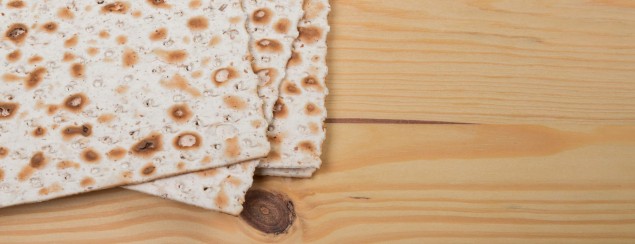Memory of a Second Seder
“Why is this night not like all other nights?” we ask ourselves at the Seder each year.
I answer that question by remembering a Seder that was not like all other Sedarim.
As a chutznik, a term Israelis use for people like me who live outside of Israel, I face a constant challenge whenever I visit friends in Jerusalem for one of the Shalosh Regalim—Pesach, Shavuot and Sukkot: what do I do on the second day of yom tov?
Some Orthodox Jews keep one day of the holiday, just like people who live in Israel, a minority but legitimate halachic option. However, I feel uncomfortable doing that; as long as my home is in the Diaspora, I act in Israel as I do in New York City, praying the holiday prayers and observing the holiday restrictions for two days instead of one. This means finding a second-day chag minyan while most men in my friends’ Chareidi neighborhood are at a Chol Hamoed worship service on the second day of Pesach and Sukkot or, in the case of Shavuot, a weekday minyan. It also means additional yom tov meals.
The minyanim are easy to locate. Within a mile’s walk, in a neighborhood that is home to several yeshivot serving students from overseas, and countless visitors like me from abroad, a choice of second-day minyanim are available. I usually walk to one up the hill from my adopted family, while the streets are filled with Chassidic and Yeshivish folks shopping and driving cars, activities that someone keeping yom tov obviously would not do. On the way to shul I’m always reminded that I’m a guest in Eretz Israel, not yet a resident of the Jewish homeland. I’m further reminded when my hosts, inevitably forgetting that I’m still in yom tov mode, ask me to turn on a light or go shopping for them or do something else that one does not do on chag.
Then there are the meals. My hosts are always glad, on Sukkot, to set me up in their sukkah for a seudah while they go about their non-yom tov activities. One year, Meyer Birnbaum z”l, of Lieutenant Birnbaum fame, the one-time member of the US Army who wrote a popular book about his experiences as a frum officer in uniform, graciously invited me to join him in his sukkah, a ten-minute walk from where I was staying, on what for me was the second night of the holiday. It wasn’t yom tov for him, but for a few hours he sat with me and regaled me with tales of the army and life afterwards in Israel. It’s a memory I’ll always treasure. Another year, on Pesach, a student from my rosh yeshivah host’s kollel invited me to a second Seder he and his wife were making for one of their parents from Europe who was spending Pesach with them. One year I had nowhere else to go, so I decided to make my own Seder at my friends’ apartment.
When I came back from shul that night, my hostess Shulamis, a native of Phoenix who came to Israel for seminary and never went back full-time to the States, had set up a small table with a tablecloth and Kiddush cup as well as two covered matzahs and the other accoutrements of the festive meal. A wonderful cook, she’d prepared a scrumptious meal for me. At the larger main table, the rest of the growing family ate their Chol Hamoed meal and went about their Chol Hamoed duties, making phone calls and plans for the rest of the holiday. I sat down at my table, opened my Haggadah, and prepared to make my own, truncated solo Seder.
Then Chaim came over.
He’s one of the family’s dozen children. He was about nine years old then, a student in a Chareidi school. I’d known him most of his young life. “I don’t want you to make a Seder by yourself, Steve,” he said. “I’ll eat with you.” His parents had not pushed him to sit with me; he simply had learned in school to be a mensch. Chaim, in his yom tov suit, pulled up a chair next to me, opened his own Haggadah—probably a Hebrew-only one, unlike mine in Hebrew and English—and we started reading. Over the next few hours—I didn’t have to rush, since I had someone to share the Seder with me—he told me what he had learned in school about the night’s readings and rituals, he told me stories about the Sedarim he had been a part of in his Jerusalem home, he helped me understand parts of the Haggadah that he as a kid understood better than I as an adult did. And he helped me feel totally at home.
His insights may not have been as profound as those of the adults who usually surround me at a Seder table, but his enthusiasm and his desire to make sure that his honorary uncle didn’t sit by himself, provided a stronger lesson. A lesson that with the right company, one Seder does not have to be like all other Sedarim.
A frequent contributor to Jewish Action, Steve Lipman is a staff writer for the Jewish Week in New York.

